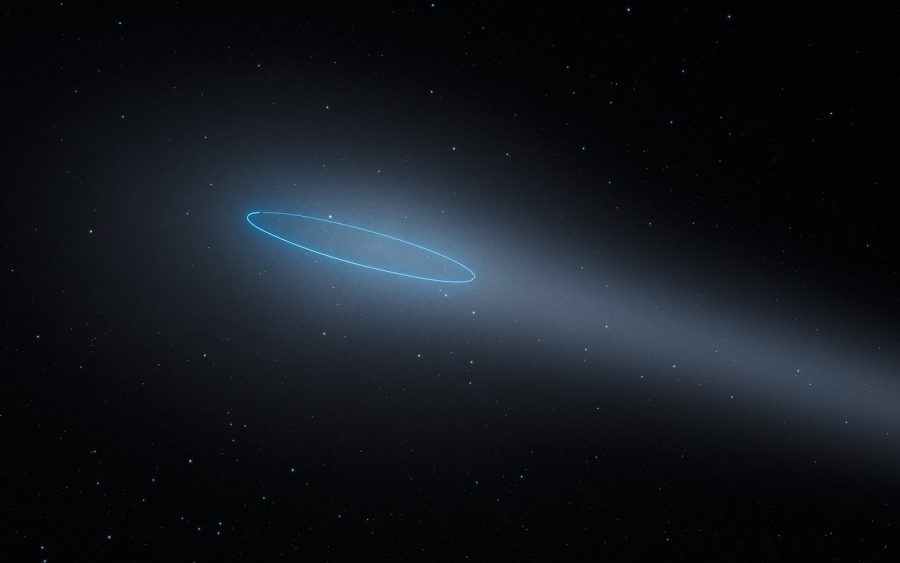Observations from the Hubble Space Telescope revealed that an asteroid discovered in 2006 has a twin and also shows comet-like activity. It is very rare for an asteroid to show signs of a comet but this one sprouts a tail and is now called a binary asteroid, according to a paper published in Nature.
Astronomers from the Max Planck Institute for Solar Systems Research already suspected that it could be two asteroids, but they were amazed to confirm it. The two worlds are almost the same mass and size, and it is the first time that a pair of asteroids that orbit one another – about 100 kilometers apart– are also classified as a comet.

Asteroids are bodies that usually evolve as a result of a collision and through disruptions that emerge as a consequence of very rapid rotation. The researchers hypothesize that the binary asteroid was originated when a single Solar System body rotated so rapidly that it tore itself apart, forming an almost identical twin.
These masses are made primarily of rock, and they have little water ice. On the other hand, comets are mainly comprised of ice and dust. They sprout tails as they orbit the sun as a result of sublimation, a process in which the ice goes directly to gas and skips the water stage.
Furthermore, comets originate in a region known as the Kuiper Belt, located beyond Neptune, whereas asteroids orbit the sun mainly in the asteroid belt found between Mars and Jupiter’s orbits.
Due to all of these differences, it is very rare for an asteroid to have comet-like characteristics. Astronomers discovered that this asteroid was showing cometary activity in 2011 and named it 288P after they classified it as a comet. It wasn’t until September 2016 that they realized it was a binary body thanks to images provided by the Hubble Space Telescope just before it made its closest approach to the sun.

“We detected strong indications of the sublimation of water ice due to the increased solar heating – similar to how the tail of a comet is created,” explained Jessica Agarwal, the lead author of the study, as reported by Space Daily.
The asteroid 288P is one of the five asteroids that are known to display cometary activity at perihelion, which occurs when the body’s ice warms up as it is closest to the sun and the tail appears.
The Hubble Space Telescope will continue to reveal information about our solar system
By observing the behavior of the binary asteroid, astronomers hope to find out the origin of water on Earth. Whereas one theory says that water emanated on our planet thanks to a comet, a second theory that emerged in the scientific community claims that an asteroid is behind water origin in our world.
Agarwal explained to CBC News that the ice from this binary asteroid emerged 5,000 years ago even though asteroids are believed to be 4.6 billion years old just like the Solar System.
One more question scientists expect to answer is whether both components of the binary asteroids are active. Further Hubble observations will continue this fall and winter, but they may not be very clear since the asteroid/comet will be at a greater distance.
Source: Nature
